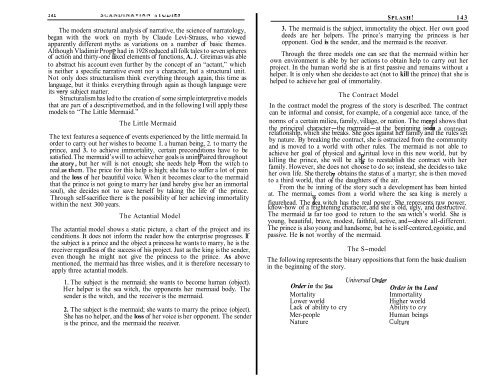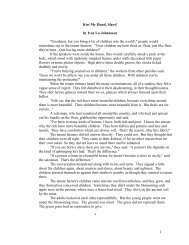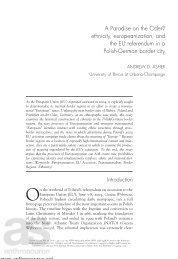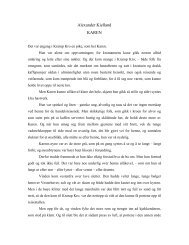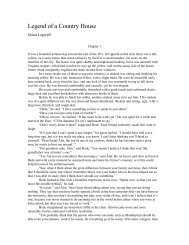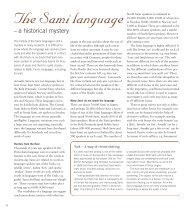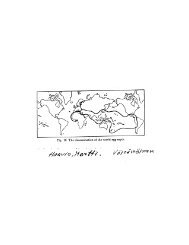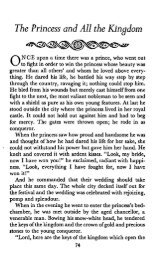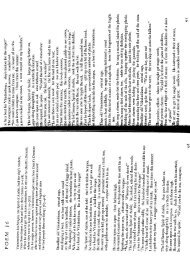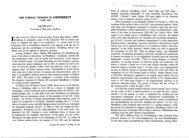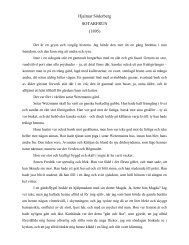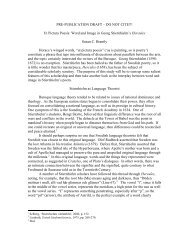Six Views of “The Little Mermaid” - Department of Scandinavian ...
Six Views of “The Little Mermaid” - Department of Scandinavian ...
Six Views of “The Little Mermaid” - Department of Scandinavian ...
You also want an ePaper? Increase the reach of your titles
YUMPU automatically turns print PDFs into web optimized ePapers that Google loves.
14L 3LANUIIYAVIAIY 3 1 UlJIILa<br />
The modern structural analysis <strong>of</strong> narrative, the science <strong>of</strong> narratology,<br />
began with the work on myth by Claude Levi-Strauss, who viewed<br />
apparently different myths as variations on a number <strong>of</strong> basic themes.<br />
Although Vladimir Prop had in 1928 reduced all folk tales to seven spheres<br />
<strong>of</strong> action and thirty-one P ixed elements <strong>of</strong> functions, A. J. Greimas was able<br />
to abstract his account even further by the concept <strong>of</strong> an “actant,” which<br />
is neither a specific narrative event nor a character, but a structural unit.<br />
Not only does structuralism think everything through again, this time as<br />
language, but it thinks everything through again as though language were<br />
its Gee subject matter.<br />
Structuralism has led to the creation <strong>of</strong> some simple interpretive models<br />
that are Dart <strong>of</strong> a descriptive method, and in the following I will apply these<br />
models ;o <strong>“The</strong> <strong>Little</strong> Mermaid.”<br />
The <strong>Little</strong> Mermaid<br />
The text features a sequence <strong>of</strong> events experienced by the little mermaid. In<br />
order to carry out her wishes to become 1. a human being, 2. to marry the<br />
prince, and 3. to achieve immortality, certain preconditions have to be<br />
satisfied. The mermaid’s will to achieve her goals is unim aired throughout<br />
, but her will is not enough; she needs help P rom the witch to<br />
“‘“31<br />
the realize t em. The price for this help is high; she has to suffer a lot <strong>of</strong> pain<br />
and the loss <strong>of</strong> her beautiful voice. When it becomes clear to the mermaid<br />
that the prince is not going to marry her (and hereby give her an immortal<br />
soul), she decides not to save herself by taking the life <strong>of</strong> the prince.<br />
Through self-sacrifice there is the possibility <strong>of</strong> her achieving immortality<br />
within the next 300 years.<br />
The Actantial Model<br />
The actantial model shows a static picture, a chart <strong>of</strong> the project and its<br />
conditions. It does not inform the reader how the enterprise progresses. If<br />
the subject is a prince and the object a princess he wants to marry, he is the<br />
receiver regardless <strong>of</strong> the success <strong>of</strong> his project. Just as the king is the sender,<br />
even though he might not give the princess to the prince. As above<br />
mentioned, the mermaid has three wishes, and it is therefore necessary to<br />
apply three actantial models.<br />
1. The subject is the mermaid; she wants to become human (object).<br />
Her helper is the sea witch, the opponents her mermaid body. The<br />
sender is the witch, and the receiver is the mermaid.<br />
2. The subject is the mermaid; she wants to marry the prince (object).<br />
She has no helper, and the loss <strong>of</strong> her voice is her opponent. The sender<br />
is the prince, and the mermaid the receiver.<br />
SPLASH! 143<br />
3. The mermaid is the subject, immortality the object. Her own good<br />
deeds are her helpers. The prince’s marrying the princess is her<br />
opponent. God is the sender, and the mermaid is the receiver.<br />
Through the three models one can see that the mermaid within her<br />
own environment is able by her actions to obtain help to carry out her<br />
project. In the human world she is at first passive and remains without a<br />
helper. It is only when she decides to act (not to kill the prince) that she is<br />
helped to achieve her goal <strong>of</strong> immortality.<br />
The Contract Model<br />
In the contract model the progress <strong>of</strong> the story is described. The contract<br />
can be informal and consist, for example, <strong>of</strong> a congenial acce tance, <strong>of</strong> the<br />
norms <strong>of</strong> a certain milieu, family, village, or nation. The m el shows that<br />
the principal character-the mermaid-at the beginning is o f<br />
relationship, which she breaks. She goes against her family and the rules set<br />
by nature. By breaking the contract, she is ostracized from the community<br />
and is moved to a world with other rules. The mermaid is not able to<br />
achieve her goal <strong>of</strong> physical and s iritual love in this new world, but by<br />
killing the prince, she will be abe to reestablish the contract with her<br />
r<br />
B<br />
family. However, she does not choose to do so; instead, she decides to take<br />
her own life. She thereb obtains the status <strong>of</strong> a martyr; she is then moved<br />
to a third world, that o the daughters <strong>of</strong> the air.<br />
From the be inning <strong>of</strong> the story such a development has been hinted<br />
at. The mermai comes from a world where the sea king is merely a<br />
figurehead. The B sea witch has the real power. She represents raw power,<br />
know-how <strong>of</strong> a frightening character, and she is old, ugly, and destructive.<br />
The mermaid is far too good to return to the sea witch’s world. She is<br />
young, beautiful, brave, modest, faithful, active, and-above all-different.<br />
The prince is also young and handsome, but he is self-centered, egoistic, and<br />
passive. He is not worthy <strong>of</strong> the mermaid.<br />
The S-model<br />
The following represents the binary oppositions that form the basic dualism<br />
in the beginning <strong>of</strong> the story.<br />
Universal Order<br />
Order in the Sea<br />
Order in the Land<br />
Mortality Immortality<br />
Lower world Higher world<br />
Lack <strong>of</strong> ability to cry Ability to cry<br />
Me r-people Human beings<br />
Nature Culture<br />
in a contract-


